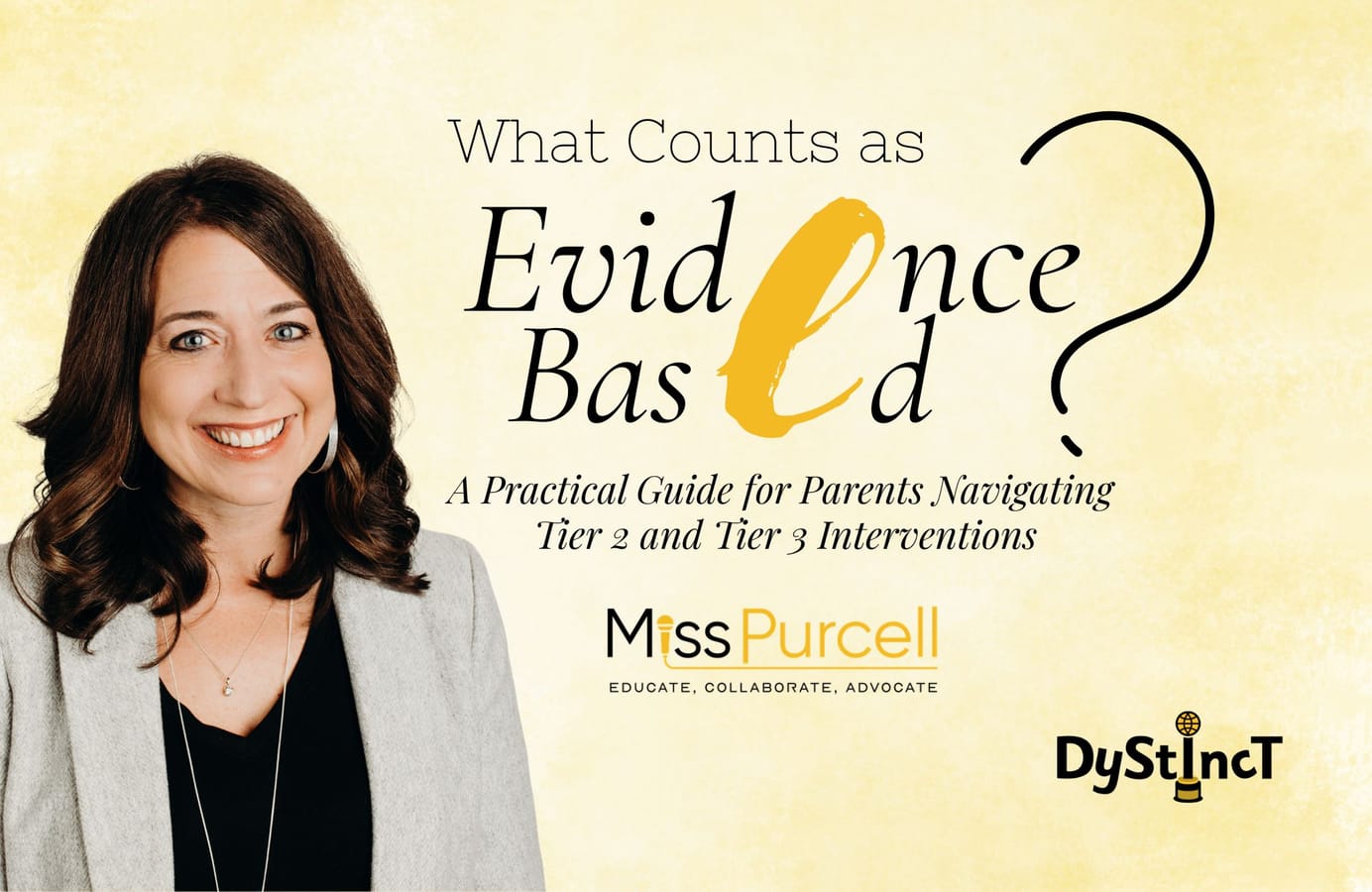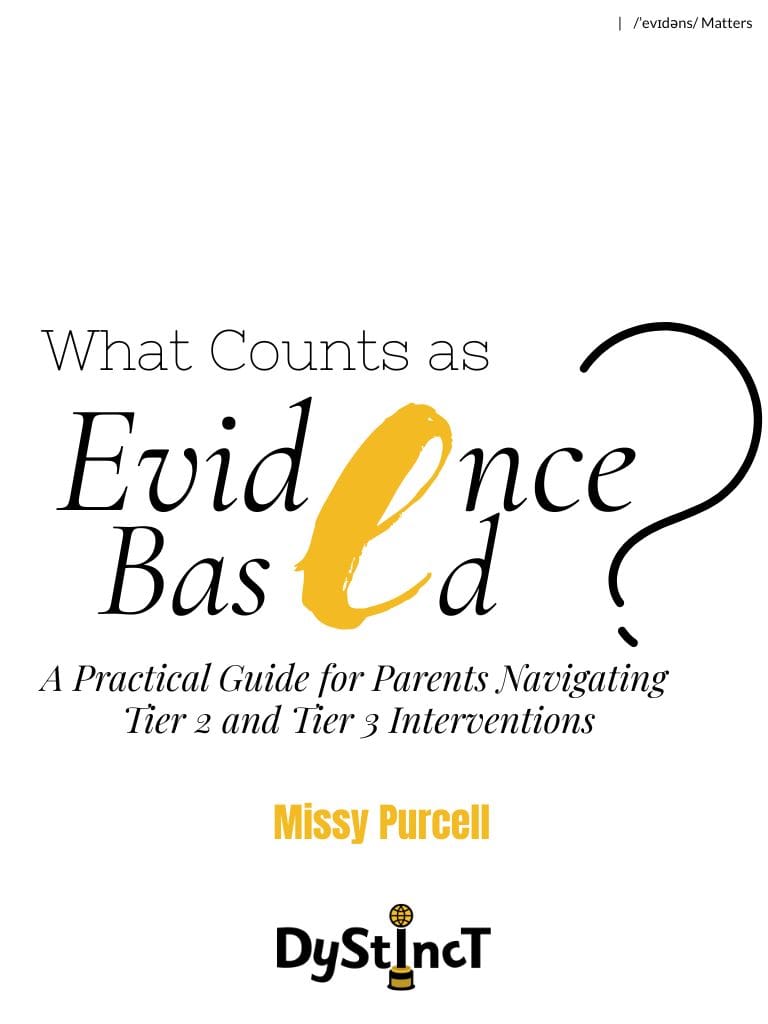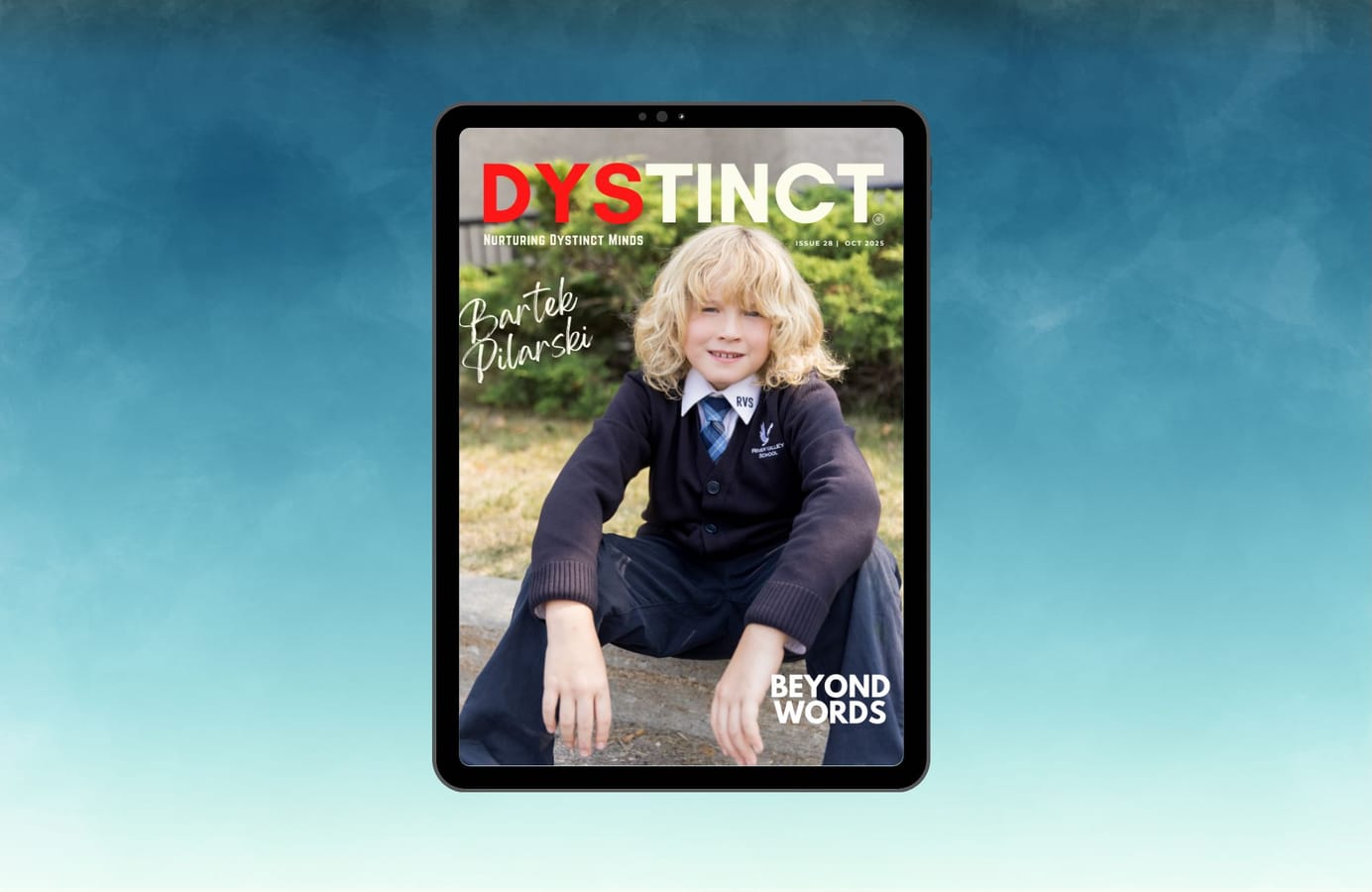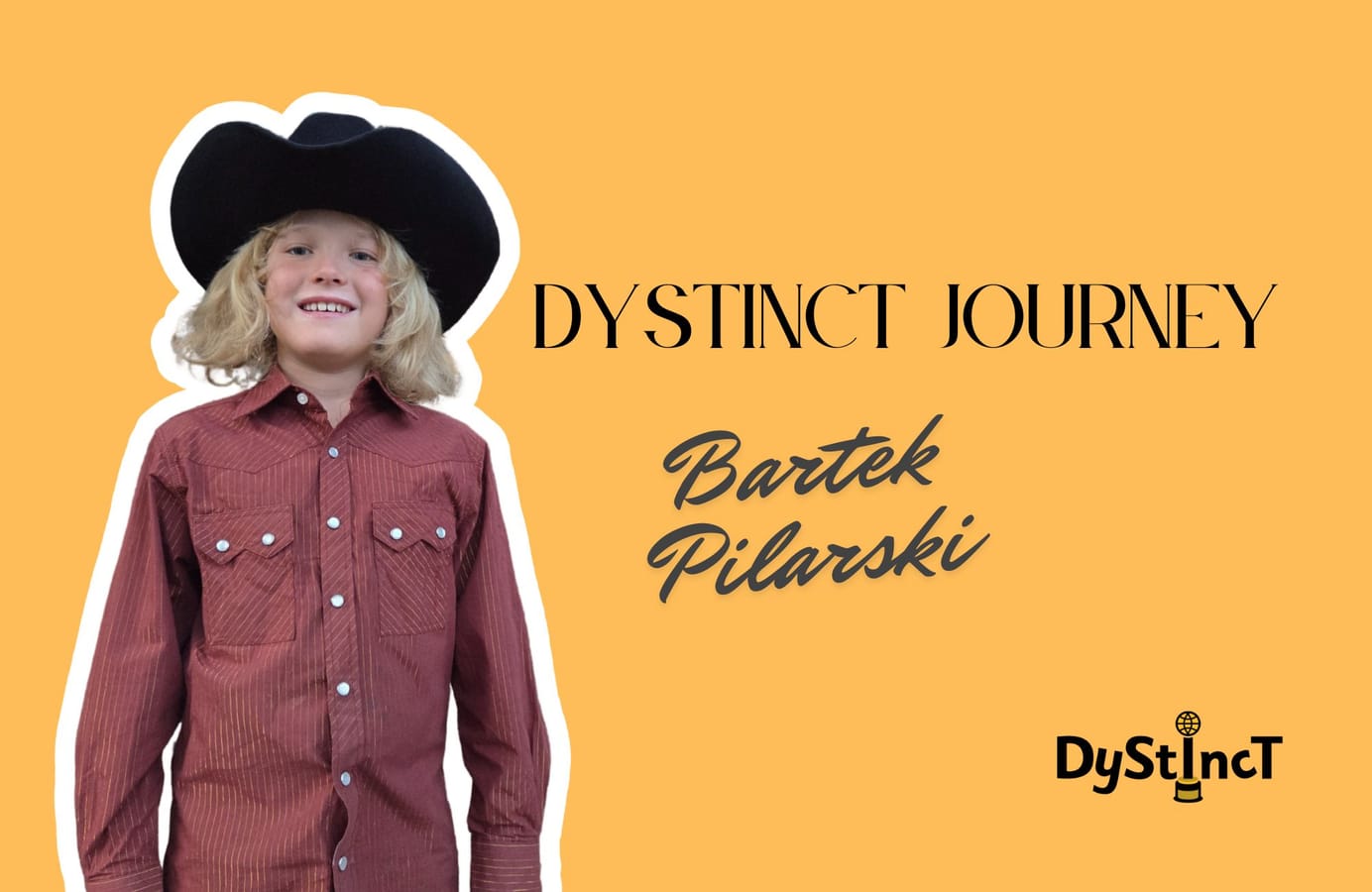
Issue 28: What Counts as Evidence-Based? A Practical Guide for Parents Navigating Tier 2 and Tier 3 Interventions | Missy Purcell
Missy Purcell explains what “evidence-based” should mean in schools, clarifies the differences between Tier 1, Tier 2, and Tier 3 instruction, and offers parents clear questions to ask when advocating for their child.

When your child struggles to read, few words sound more reassuring than "evidence-based." Schools and districts often use the term, promising that the program selected for intervention is grounded in science and proven to work. But as many parents of children with dyslexia quickly discover, the phrase "evidence-based" can be slippery.
Some programs marketed this way have decades of independent research behind them. Others borrow key terms such as "structured phonics," "multisensory learning", and "cognitive load theory", but lack the rigorous studies needed to show they truly help struggling readers. For parents, this blurred line can make it difficult to know whether their child is receiving what the research supports, or simply what's available.
This article unpacks what "evidence-based" should mean in schools, explains the critical differences between Tier 1, Tier 2, and Tier 3 instruction, and offers parents a clear set of questions to ask when advocating for their child.
Why Evidence Matters More Than Labels
Why Evidence Matters More Than Labels
For children with dyslexia, access to high-quality, evidence-based instruction can be life-changing. Decades of research, including work by the National Reading Panel (2000), the Institute of Education Sciences, and countless longitudinal studies, tell us what works: explicit, systematic instruction in phonemic awareness, phonics, fluency, vocabulary, and comprehension.
An evidence-based program is one that has been:
- Studied with well-designed, peer-reviewed research.
- Replicated across multiple settings and populations.
- Shown to produce statistically significant and educationally meaningful gains for students who struggle to read.
By contrast, programs that are merely "research-aligned" may be built on sound theories but lack empirical proof. For example, a program may advertise itself as multisensory or as following the science of reading, but without rigorous studies, parents have no guarantee it actually delivers results for children with dyslexia.
The difference between "based on science" and "proven by science" may sound small, but for a child who is years behind in reading, it can make all the difference.
Tiered Instruction: Building Blocks of Support
Tiered Instruction: Building Blocks of Support
Most schools in the United States follow a Multi-Tiered System of Supports (MTSS) or a Response to Intervention (RTI) framework. Here's how it works:
Tier 1: Core Instruction
All students should receive high-quality, evidence-based literacy instruction in the general education classroom. For children with dyslexia, this is the foundation. If Tier 1 is weak, for example, if teachers rely heavily on cueing strategies instead of phonics, many more children will need extra help.
Tier 2: Targeted Small-Group Intervention
Students who don't make adequate progress in Tier 1 should receive additional support in Tier 2. This might look like a small group of three to five students meeting several times a week for focused reading instruction.
Tier 3: Intensive, Individualized Intervention
In Tier 3, instruction becomes even more targeted. Groups are smaller (often one-on-one or two students), and lessons are longer and more frequent. Progress is monitored closely, and instruction is adjusted based on ongoing data.
Here's the key point for parents to remember
Here's the key point for parents to remember
Tier 2 and Tier 3 interventions should not be entirely different programs. Students with dyslexia don't need a completely new approach; they need the same evidence-based methodology delivered with more intensity.
If your child is pulled into a Tier 2 or Tier 3 setting and suddenly working with a program you've never heard of, especially one that lacks a strong research base, that's a red flag.
Intensity, Not Novelty
Children with dyslexia often need more of what works, not something new. That means:
- More frequent sessions (ideally daily, not just two or three times a week).
- Smaller instructional groups (the fewer students, the better).
- Longer sessions that allow time for explicit instruction, guided practice, and review.
- Highly trained instructors who deliver the program with fidelity.
When schools swap in trendy or unproven programs instead of doubling down on what the research supports, valuable time is lost. For a struggling reader, months or even weeks without the right intervention can widen the gap.
Questions Every Parent Should Ask
Questions Every Parent Should Ask
Advocating for your child can feel intimidating, especially when faced with acronyms and jargon. But you have the right to ask specific, pointed questions about the program and the people delivering it.
About the Program
- What program is being used? Ask for the exact name.
- What is the evidence? Has the program been validated through peer-reviewed studies with students who have dyslexia?
- How does it align with my child's needs? Where does my child fall on the program's scope and sequence, and how was that determined?
About the Instructor
- What training has the interventionist received? Was it a short introductory workshop or a full certification with supervised practicum hours? See below for a note on credentials.
- Does the instructor receive ongoing coaching or fidelity checks? Even the best program won't work if it's not delivered as designed.
This post is for subscribers only
SubscribeAlready have an account? Log in


